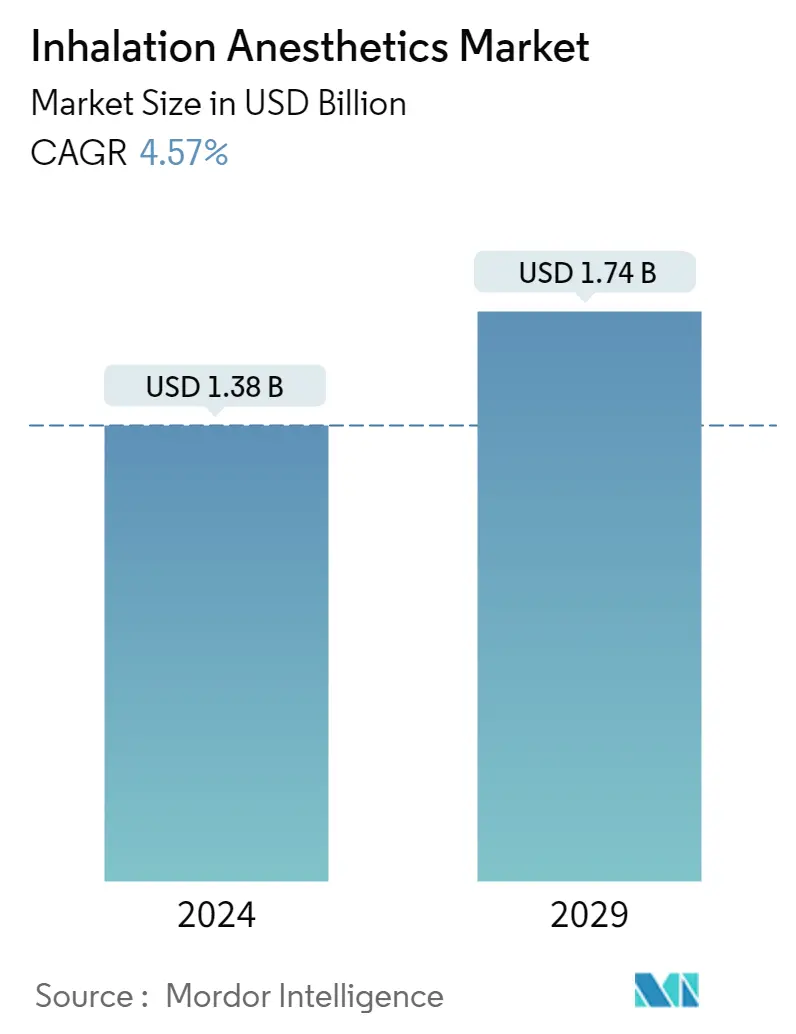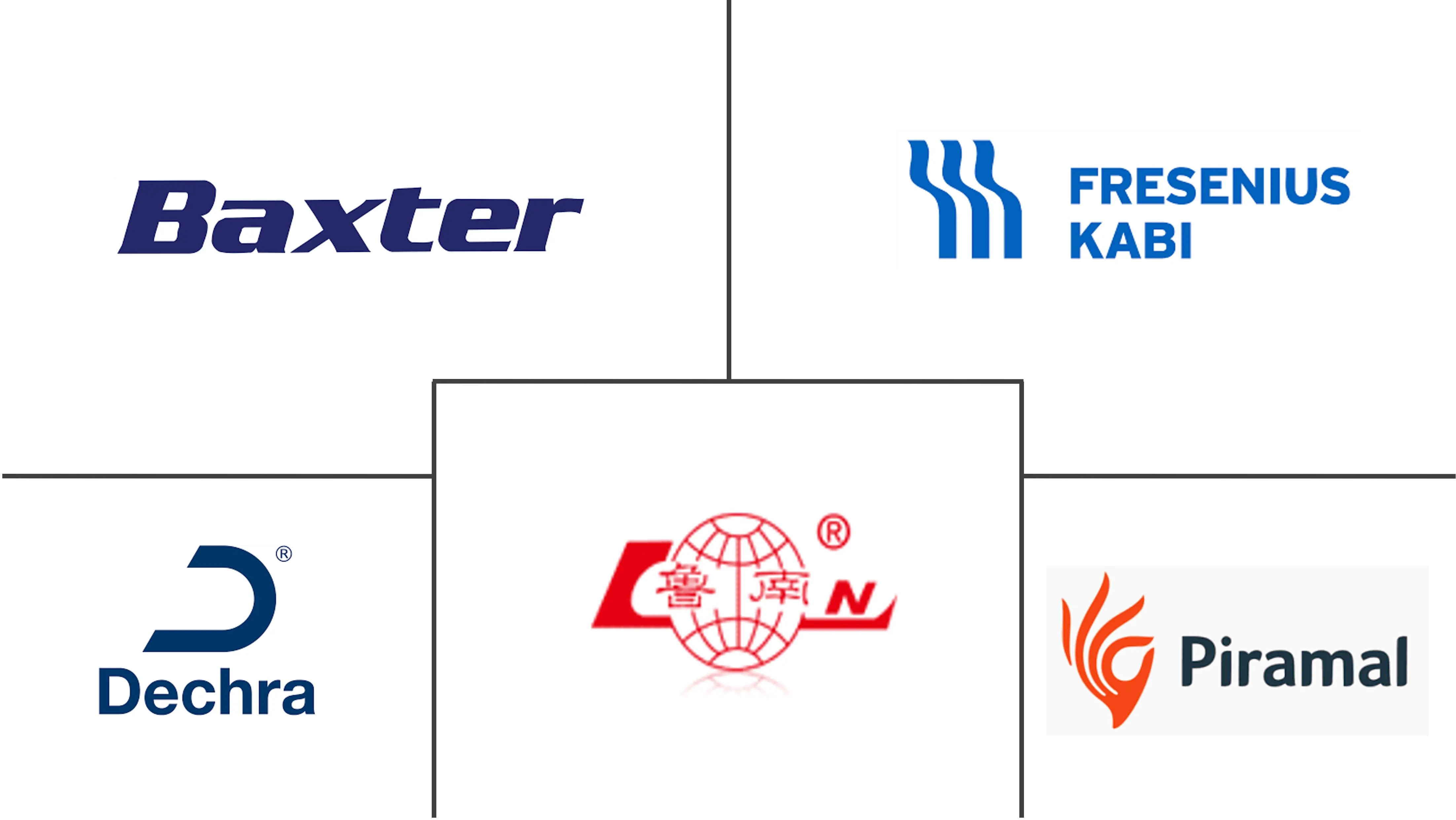Market Size of Inhalation Anesthetics Industry

| Study Period | 2019 - 2029 |
| Market Size (2024) | USD 1.38 Billion |
| Market Size (2029) | USD 1.74 Billion |
| CAGR (2024 - 2029) | 4.57 % |
| Fastest Growing Market | Asia Pacific |
| Largest Market | North America |
Major Players
*Disclaimer: Major Players sorted in no particular order |
Need a report that reflects how COVID-19 has impacted this market and its growth?
Inhalation Anesthetics Market Analysis
The Inhalation Anesthetics Market size is estimated at USD 1.38 billion in 2024, and is expected to reach USD 1.74 billion by 2029, growing at a CAGR of 4.57% during the forecast period (2024-2029).
The application of inhalation anesthetics for the diagnosis and treatment of COVID-19 and associated diseases has positively impacted the market's growth. Volatile agents are effective in patients who need complex and high sedation, significantly reducing or removing intravenous sedatives. Volatile agents contain mild muscle relaxation properties and may lower the usage of paralytic agents and benefit the lungs.
For instance, the article entitled 'Inhalational Volatile-Based Sedation for COVID-19 Pneumonia and ARDS' published in June 2020, states that isoflurane offers the highest potency with low dosing requirements for ICU patients. And these Volatiles are delivered to the patients through either an anesthesia machine or ICU ventilator with an in-line miniature vaporizer. These mini vaporizers are used to block the inhalation of carbon dioxide. And the article concluded that delivery of inhaled volatile sedation regimens with a good sedation profile might have benefits in the lung while easing pressure on essential sedative medications.
The market is expected to grow due to the increase in the number of surgeries performed globally. For instance, The Centre for Disease Control and Prevention (CDC) data updated in March 2022 related to Emergency Department Visits in the United States shows that, in the year 2020, 130 million emergency hospital visits and the number of injury-related visits were 35 million. This number increased from the prior year. In 2020, employers reported 2.7 million injury and illness cases in private industry. Injury cases declined to 2.1 million in 2020 from 2.7 million in 2019, while illness cases more than quadrupled to 544,600 cases in 2020, shows the United States Bureau Of Labor Statistics data. This surge in emergency cases and related increase in surgical interventions are among the few factors estimated to drive the growth of the studied market.
The factors, such as the increasing adoption rate of minimally invasive surgeries, are also helping the market growth due to their effectiveness in a lesser hospitalization period. Minimally invasive surgeries have been reported to cause less post-operative pain. Hence, the patients receive smaller dosages of painkillers. Additionally, as minimal cuts or stitches are involved, the hospital stay is relatively shorter, and the patients need not visit the hospital frequently. For instance, Becker's Spine Review data updated in December 2020 shows that more than 160 ASCs are performing minimally invasive spine surgery in the United States, which has grown significantly in the past decade. Similarly, Florida has 15 ASCs which offer minimally invasive spine surgery, which is the most of any other state.
However, side effects associated with the inhalation anesthetics, the lower adoption rate in case of inhaled anesthetics in certain surgical procedures, generic competition for almost all of the halogenated agents, and recent patent expiries are restraining the inhalation anesthetics market.
